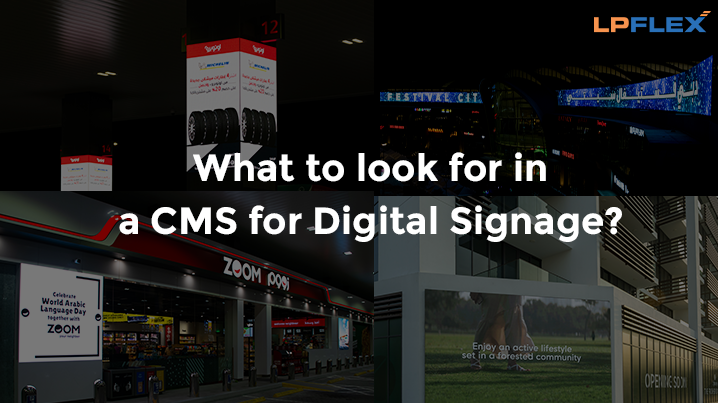
Why should Retail opt for a Digital CMS?
Content Management Systems increase operational efficiency and streamline the content generation process by integrating with existing systems and providing workflow management capabilities. A Digital Signage CMS allows multiple users to create, manage, modify, and publish digital content, along with providing automation and end-to-end touchpoint optimization for smart delivery and personalized experiences across multiple customer touchpoints – multiple screens and devices. Thus enabling the digitalization of company operations and providing an architecture for delivering on the go updates, best-in-class content management, and customisation capabilities, all of which contribute to linked customer experiences.
Content Management Platform
The capacity to produce relevant information to attract, engage, and keep customers is critical to providing exceptional customer experiences. Although a content management system (CMS) offers the foundation for creating, managing, and delivering digital content – and remains at the heart of technological stacks supporting customer experience objectives — it doesn’t sit well with today’s ‘always-on’ consumers. Integrated architectures are required to operate huge organizations at the speed of ever-changing client expectations as the number of channels grows.
Real content management is managing reusable modules rather than completely formed documents as units, which you create once and package with other modules to create flexible new products. You just have to manage it once, and any changes you make at its source are reflected across all of its numerous manifestations. This is how translation software works: you collect and identify commonly used paragraphs or snippets, then pull them into your workspace in translated form to create a whole text.
Content Reach
As the medium of engagement continues to grow at an unfathomable rate, marketers are continuously pushed by novel means of reaching their audience. Traditional content management systems (CMSs) are limited in their ability to extend material, alter presentations, and tailor experiences for emerging channels, despite the fact that they enable content production and publishing.
Content Priority
The CMS is waiting for a trigger in order of priority. It looks for a visual page if there is no current condition or data that requires it to go up soon. If there is no visual page, revenue-generating advertising is displayed, and if no ads are scheduled for that screen position, a store message is displayed, among other things.
This strategy necessitates a CMS that is capable of not only Content Prioritization, but also of integrating with all of the upstream data sources that trigger the content change. This is why using a robust platform is so important. It enables ultimate agility to fulfill the store/product or brand messaging goals by future-proofing your digital screen assets, increasing ROI on any data systems purchased, and future-proofing your digital screen assets.
Flexxtreme Digital Signage Software
LPFLEX, along with manufacturing static signs and system integration of Digital Signages, also has an in-house proprietary software that enables CMS with excellent features for a richer experience.
With an updated UI and Contextual based information, helping save time over sifting through finer details that might otherwise be complex to go through.
This is a CMS that is connected all round with all your digital systems, enabling you to view and monitor detailed reports and make updates on the fly, any time.
Conclusion
Today’s retailers, big and small, are seeking to develop capabilities that will improve their customer experience. The global Digital CMS industry is predicted to grow rapidly in the next few years, with 80 percent of customers believing that experience is just as important as products and services. This is spurred in part by the growing trend of more devices and touchpoints, which forces companies to reengineer business processes and reinvent consumer experiences in order to stay ahead of the curve.

